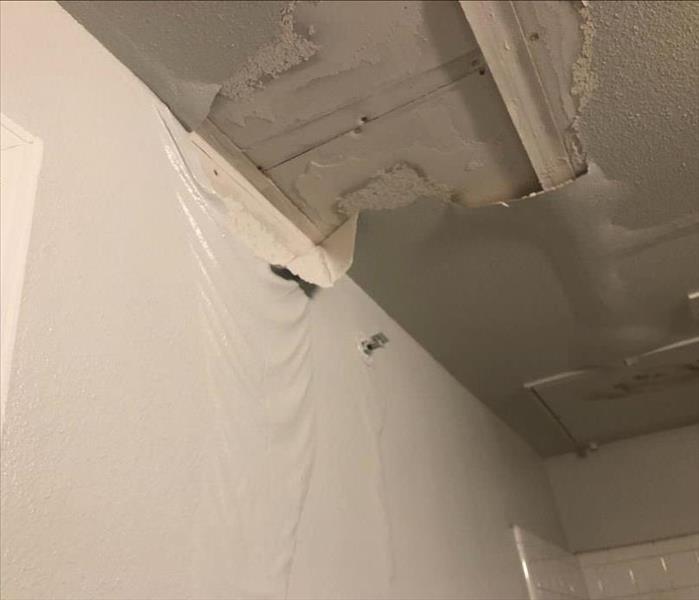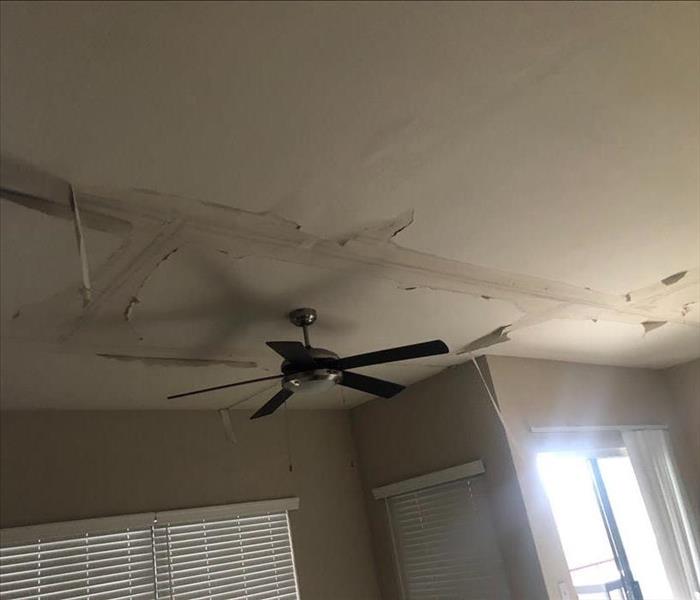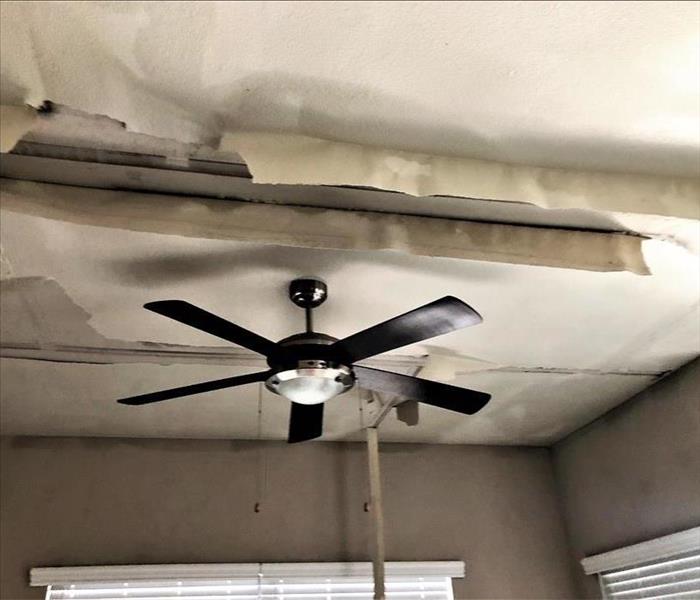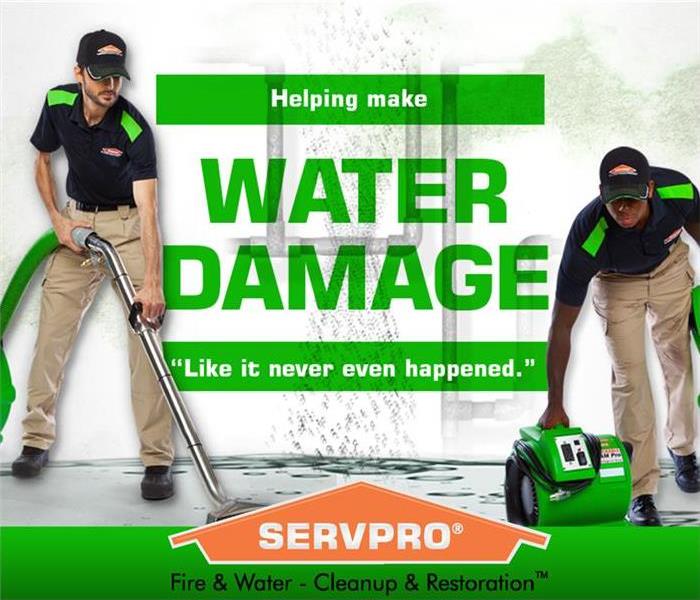Water Damage in your Home
1/28/2022 (Permalink)
 SERVPRO of South Austin
SERVPRO of South Austin
As a leader in the cleaning and restoration industry, we strive to meet or exceed the expectations of every customer, client, and business that is involved with water damaged property. Every property, every project, every customer deserves excellence.
Water intrusion in a home or business is always a traumatic event. Effectively restoring a water-damaged property is such a valuable service to any homeowner or business owner. This type of disruption creates stress and uncertainty for many individuals and can be very costly.
This is when you call us at SERVPRO of South Austin to provide guidance and assistance to ensure the best decisions are made through these difficult times.
Excessive water and moisture in any indoor environment can pose health risks for occupants and if it is not resolved properly. Water intrusion can cause severe damages to both your structure and contents.
Properly mitigating, drying, and restoring a water-damaged structure requires training, expertise, and specialized equipment. With hands-on experience and coaching in the field, we are the best in the industry.
The goal of emergency actions is to protect your structure and contents from further damage, establish a safe environment, extract water, demo unrestorable materials, and create the conditions for drying the structure and contents effectively. This typically involves calculating and positioning air movers and dehumidifiers within the affected area.
Once the equipment is placed, we monitor the drying process and make sure it is working properly. Monitoring services continue until the structure and contents are dry as we evaluate, update monitoring logs, and adjust as needed.
Feel free to reach out to us at SERVPRO of South Austin for any additional questions or concerns. Always here to help. “Like it never even happened.”
Types of Water Damage & Damage it Causes
1/28/2022 (Permalink)
 SERVPRO of South Austin
SERVPRO of South Austin
Knowing the difference between clean, gray, and black water can help a lot during the process and being able to understand what types of damage are covered under your insurance policy.
With any loss, there are ways to identify the level and severity of the damage that has occurred to your home.
What is Clean Water?
Clean water is water that comes from your faucet or showerhead that you can drink safely. It is also considered rainwater or snowmelt. Water damage from within your home can come from a broken water line, a busted toilet tank, a leaky washer or refrigerator, or rain or snowmelt entering your home. While clean water flooding your floors may not cause an immediate health risk, it can quickly evolve into the gray water after prolonged contact with building surfaces, material, and items. This can happen within 48 hours which is why it is important to call our team as soon as possible after a flood or water damage.
What is Gray Water?
Gray water is water that may contain chemicals or contaminants that may be harmful to your health. Gray water can come from the shower and sink drains, the washer drain, the dishwasher drain, and aquariums. Gray water can cause even more damage than clean water and can evolve into black water within 48 hours causing even further damage and health risks.
What is Black Water?
Blackwater is contaminated water from floodwaters and sewage waters. It can come from a flooded river, a backed-up toilet or sewage line in your home. It can cause health effects and should be avoided.
Blackwater should be professionally removed, dried out and cleaned by professionals with the right tools and processes to ensure a thorough cleanup.
SERVPRO of South Austin is always here to help. Feel free to reach out with any additional questions or concerns for future reference.
Water Extraction in Austin, TX and What You Need to Know.
8/9/2021 (Permalink)
 SERVPRO of South Austin
SERVPRO of South Austin
When your home has suffered from water damage, it can be a stressful and tense experience. If the damage is severe, you will need to hire professionals to repair and restore your home or business.
That’s where we come in as your highly recommended SERVPRO of Austin, TX, SERVPRO of South Austin with years of experience to help support you. Understanding what to expect from a water damage restoration company can help make the process less overwhelming.
There is no such thing as a small disaster, especially with intrusion of water you can’t see. It can contain bacteria, mold, rot, mold growing, or other unseen damage. Every water damage restoration project is different. The building (or structure) provides variables that may change with every project, such as the electrical system, type of building materials, or hazardous materials in the building.
The water loss itself provides variables, such as the sanitation of the water, hazardous substances in the water, length of time the water has been in the structure, presence of mold contamination, and mold growth. Take time to identify and resolve safety hazards before proceeding with the project.
Water damage can also affect the value of your property. Before you get out the mop bucket and clean the affected areas yourself, consider how the damage can potentially affect the long-term structure of your home or business.
SERVPRO of South Austin professionals know how disruptive water damage can be for your business and are trained to manage the drying process from start to finish at a pre loss condition. With rapid response time and a full line of water cleanup and restoration services, we can help you regain control quickly, by helping to ensure your facility and its contents are properly dried, deodorized and protected.
When we respond to a call for water damage repair, we have one primary goal: To dry wet building materials and contents items. As restoration professionals, we remove water and moisture from a wet building and return the building to what it was before the loss—before the water intrusion occurred.
Goals of Restorative Drying:
1. Return excessively wet materials to their normal (equilibrium) moisture levels.
2. Reduce the time that materials are excessively wet.
3. Determine the most cost-efficient procedures for drying.
To accomplish these goals, our team controls the airflow, humidity, and temperature to promote drying.
Moisture moves by four mechanical processes.
Liquid flow, air movement, capillary suction, and vapor diffusion.
1. Liquid flow. We most often observe moisture movement as water flows in liquid form. Liquid flow occurs as rainwater leaks through a roof, ground water soaks through a foundation, or water pours from a broken water pipe.
2. Air movement. Moisture in the air is carried by moving air. Air moves from high air pressure areas to low air pressure areas and brings moisture with it.
Moisture moves by airflow through cracks and small openings in a building’s envelope or as air pressure moves moist air through a chimney. Moisture and air moving from outside a building to the inside is called infiltration; moisture and air moving from inside to the outside is called exfiltration.
3. Capillary suction. Liquid moisture can move through a narrow pathway due to contact between the moisture and the surface of the path. Capillary suction allows liquid moisture to move through the pores of porous materials.
4. Vapor diffusion. Water vapor moves as a gas through materials. Water vapor moves from areas of high vapor pressure to areas of low vapor pressure.
Whether moisture moves through a material by vapor diffusion depends on whether differences in vapor pressure exist across the material. How fast moisture moves by vapor diffusion depends on how permeable the material is.
Before you risk any further damage and potentially effect the long term value of your property, call us as your local water damage, flood damage, fire damage, smoke damage, and cleaning services professional at SERVPRO of South Austin.
Do You Know The Different Classes of Water Damage?
1/13/2021 (Permalink)
 Call SERVPRO of South Austin at (512) 796-7721. We are always here to help!
Call SERVPRO of South Austin at (512) 796-7721. We are always here to help!
SERVPRO of South Austin is a leader in water mitigation and restoration services. Our highly trained professionals create a specialized drying plan for every job, no job is exactly like another. Our crew uses a number of factors when determining the best way to dry out your Austin, TX home or business property. One of these factors is the class of water present. There are 4 classifications of water.
Class 1
- A small amount of water is present in the home.
- Less than 5% of absorbent materials such as carpet and pad are wet.
Class 2
- A moderate amount of water is present in the home.
- Only 5% to 40% of the combined floor, wall, and ceiling is wet.
- Water has wicked up walls less than 24 inches.
Class 3
- A large amount of water is in the home.
- More than 40% of the combined floor, walls, and ceiling are wet.
- Water has wicked up walls more than 24 inches.
Class 4
- Specialty drying situation involving deeply held or bound water, such as a saturated subfloor or soil in a crawl space.
- May require longer dry time or specialty equipment.
SERVPRO of South Austin is here for you. Our experts dry your home quickly and efficiently, making water damage “Like it never even happened.” Don’t hesitate to call us at (512) 796-7721.




 24/7 Emergency Service
24/7 Emergency Service


